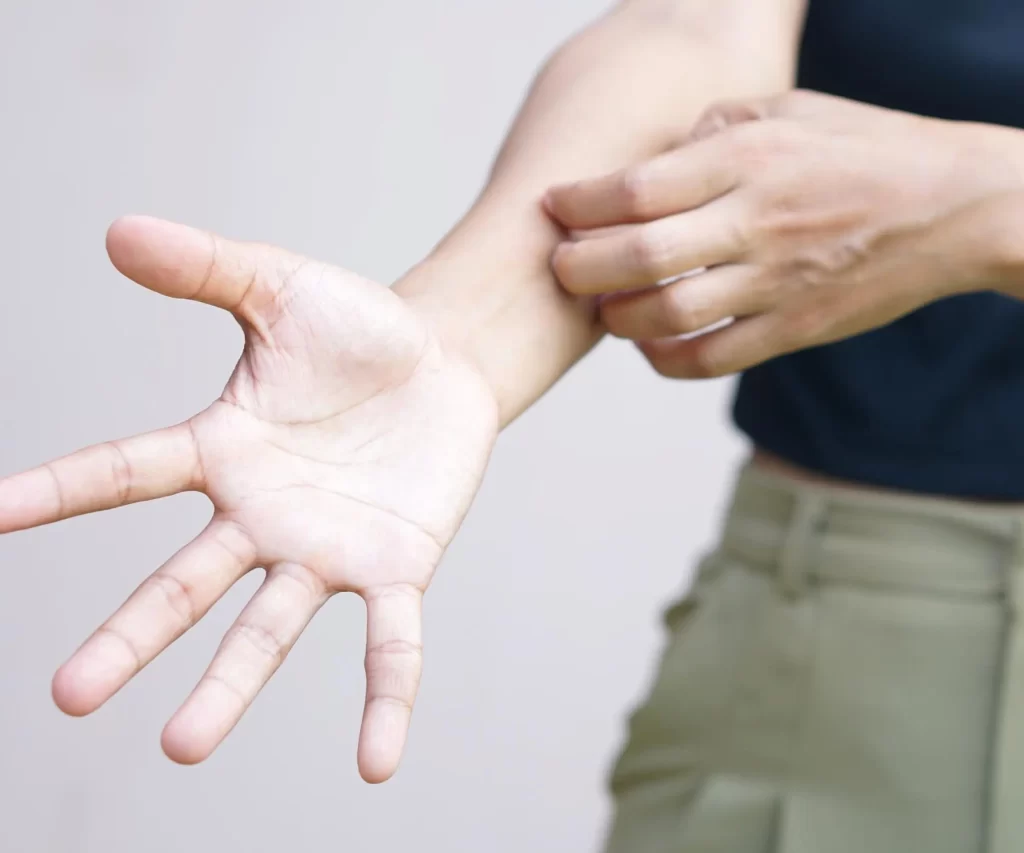Do you wake up in the morning and find it difficult to move since your …

Finding Relief: How to Treat Skin Rash
Skin rashes can be uncomfortable, itchy, and even painful, often causing distress and inconvenience. The good news is that many skin rashes can be effectively treated at home with simple remedies and self-care techniques. In this blog post, we will explore various methods to treat common skin rashes and provide relief for irritated skin.
Identify the Cause:
Before starting any treatment, it is important to identify the cause of the skin rash. Rashes can have numerous triggers, including allergies, irritants, infections, or underlying medical conditions. Understanding the root cause can help determine the most appropriate treatment approach.
Keep the Affected Area Clean:
Gently cleanse the affected area with mild soap and lukewarm water. Avoid using harsh soaps or excessive scrubbing, as this can further irritate the skin. Pat the area dry with a soft towel, ensuring you do not rub the skin vigorously.
Apply a Cold Compress:
For rashes that are itchy or inflamed, apply a cold compress to the affected area. A cold compress can help soothe the skin, reduce itching, and minimize swelling. Wrap a few ice cubes in a clean cloth or use a cold pack wrapped in a thin towel. Apply it to the rash for 10 to 15 minutes at a time, several times a day.
Use Calming Topical Treatments:
Over-the-counter creams, ointments, or lotions containing ingredients like hydrocortisone, calamine, or aloe vera can provide relief for skin rashes. These products can help reduce itching, inflammation, and redness. Follow the instructions on the packaging and consult a pharmacist or healthcare professional if necessary.
Moisturize Regularly:
Keeping the affected area moisturized is essential for promoting healing and preventing further irritation. Choose a gentle, fragrance-free moisturizer and apply it to the rash multiple times a day. Opt for products that contain ingredients like ceramides, glycerin, or shea butter, as they help lock in moisture and soothe the skin.
Avoid Triggering Factors:
If you have identified the trigger for your skin rash, take steps to avoid or minimize exposure to it. This may include avoiding certain allergens, changing laundry detergents or skin care products, or taking precautions to protect your skin from environmental irritants.
Practice Good Hygiene:
Maintain good hygiene practices to prevent the rash from worsening or spreading. Keep your nails short to minimize the risk of scratching and causing further damage to the skin. Avoid sharing personal items like towels or clothing that may come into contact with the affected area.
Seek Medical Advice if Necessary:
If the skin rash persists, worsens, or is accompanied by severe symptoms such as fever, pain, or oozing, it is important to seek medical advice. A healthcare professional can provide a proper diagnosis, recommend appropriate treatment, or refer you to a dermatologist if needed.
Conclusion:
Treating a skin rash involves a combination of identifying the cause, practising good skincare habits, and using suitable remedies to alleviate symptoms. While many rashes can be treated at home, it is important to consult a healthcare professional if the rash persists or is accompanied by concerning symptoms. By following these guidelines, you can take proactive steps towards treating your skin rash and finding the relief you deserve.







